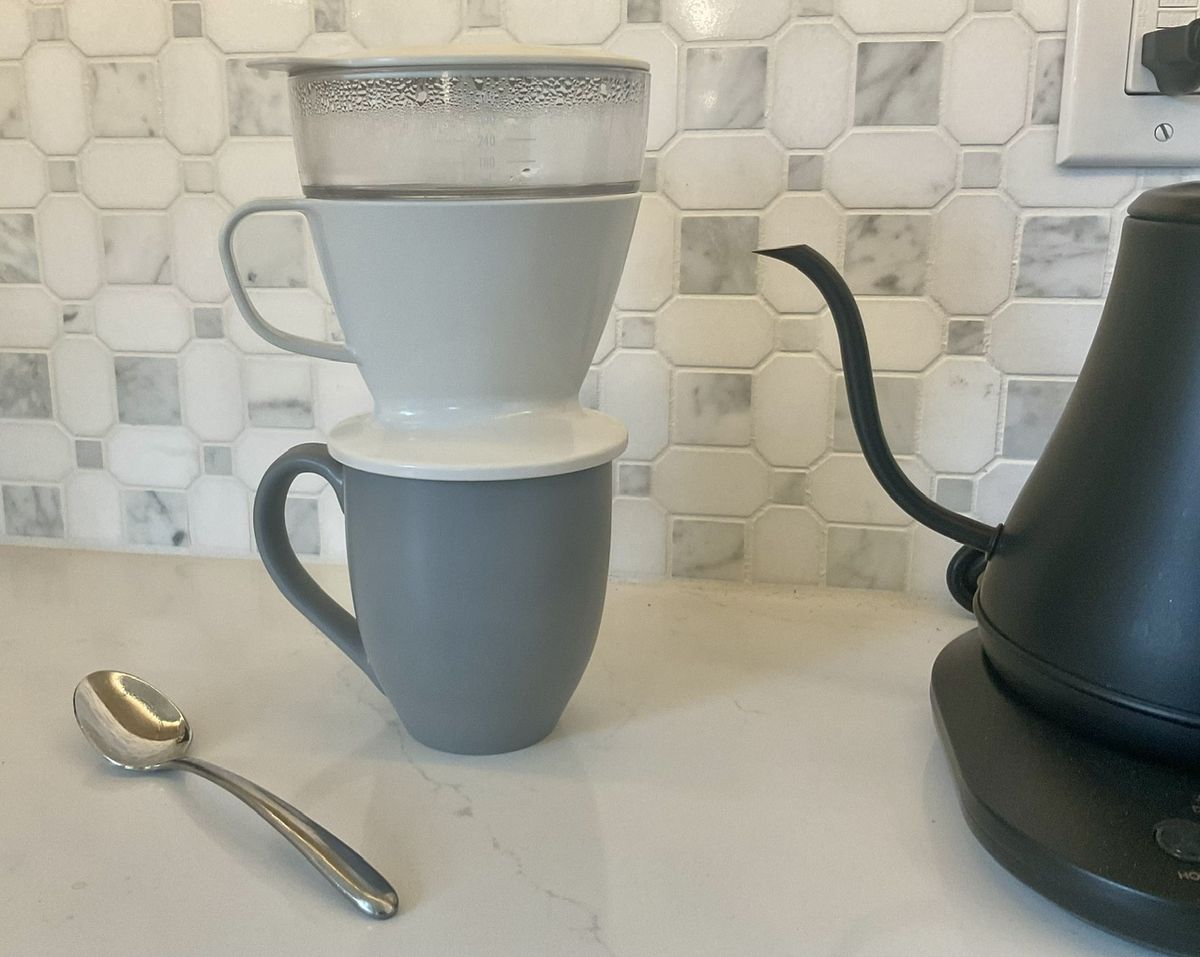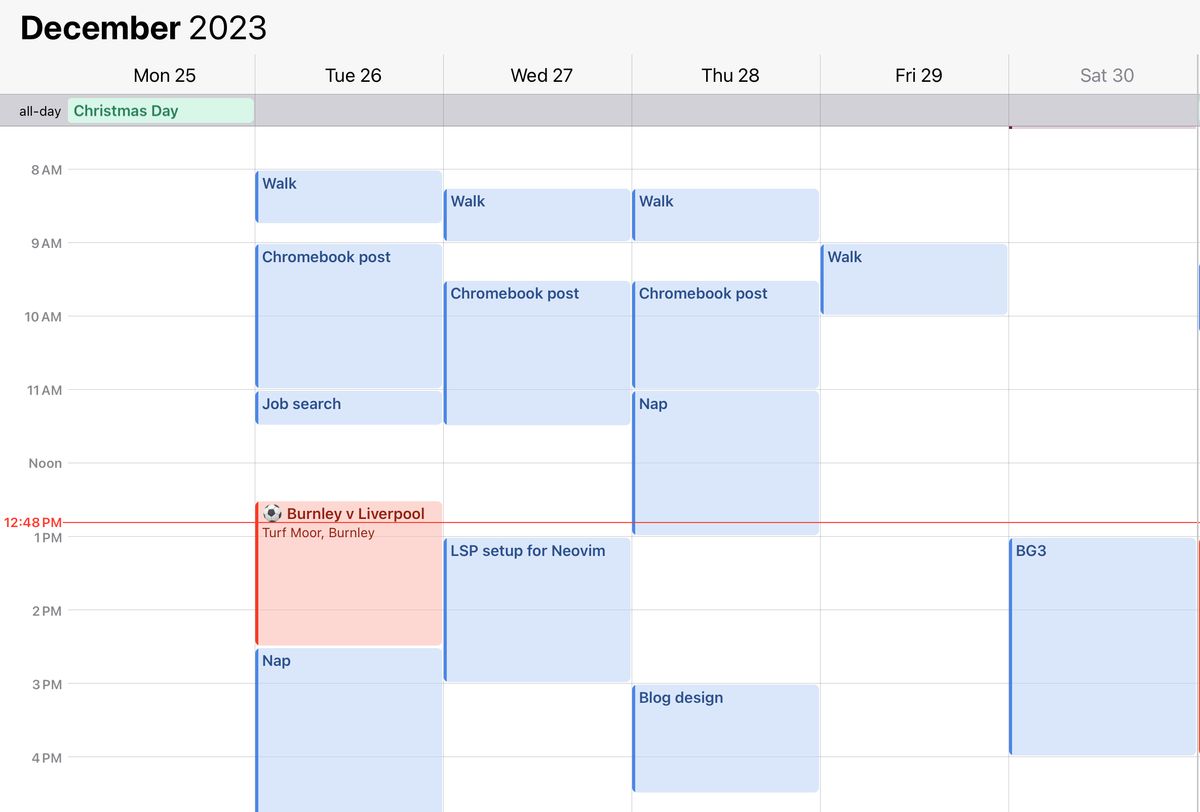Intentional mornings make the day
Earlier this week, I noted that I’d be sharing more longer form thoughts on my minimalism lifestyle. Today I want to share how important my mornings are to that lifestyle. I take very intentional actions to prepare my day. These actions effectively set up the framework of how and where I spend my waking time.
It’s taken many iterations to get the current iteration of this framework. Probably around six months of trying different approaches and tweaking along the way. But I think I’ve found a set of steps that works for me.
They may not work for you but by sharing mine, perhaps you’ll gain some ideas to help you with yours.
Intention is the key
Before sharing my morning ritual, I want to emphasize a key theme I’ve adopted in my life for the past few years. That theme is living each day with intention. It doesn’t mean I can’t be spontaneous or that I’m paralyzed when life throws the invitable curveball.
Instead, I simply focus specifically on the things that I intend to do. A perfect anti-pattern of intentional action is what can happen when looking up something on the web using a smartphone. What’s the specific intention of that action? Using a tool to specifically get some value, information or to complete a task.
In this case, it’s to find something, such as the difference between vegetarians and vegans, for example. So in an intentional situation, you search for that difference, get results and put the smartphone done. The intended task is complete.
What happens in many cases though is that unintended actions follow the second step in that example.
After reading the results of your search query, you instead see notifications from other apps. Or you open your email app to check the Inbox. Maybe without even thinking about it, you hop over to social media and start scrolling. The list goes on an on. Every one of these actions is unintentional, more of a subconscious habit. And these uninintentional minutes add up, being subtracted from the available minutes of your intentional actions.
This is mainly why I rely heavily on my Apple Watch as “minimal phone”. There are far fewer distractions available to my subsconsious with such a limited device.
The first 30-60 minutes: Try to just “be”
I start my day with an intentional amount of mindful time. Generally, it’s at least 30 minutes but I prefer around 60.
I make a cup of coffee or two during this time but it’s not a mindless activity. For example, I focus on the water and coffee measurements. I take a few seconds to smell the ground coffee before adding it to the filter. I walk to the window and slowly look around at everything outside there is to see while the water is heating up. When the coffee is ready, I don’t just drink it. Occasionally, I savor the taste as if I’ll never again have coffee, making sure there’s a strong memory of that taste. I’m not just pouring liquid down my throat. I’m having and enjoying an experience.

All of these little actions take just a few seconds. I’m not investing a huge amount of time into the morning coffee experience. Yet by being so intentional and present, the experience is far more enjoyable than otherwise. It’s not just a random, valueless blip on the timeline of my day. It’s a small but important part of my day.
I also refrain from any digital interaction during this time, with one exception. Sometimes, I do play some relaxing, ambient music on the Sonos speaker.
Here too, I try to experience the music rather that just have background noise around me. While enjoying my coffee, I’ll listen for different sounds that I may have missed on a previous listen. Just “being” and absorbing the simple pleasures around me brings clarity and calmness.
Planning the day with intention
Once the “me time” is over, I plan out my day. Every activity I intend to get done gets a time block on my calendar. I make sure to leave time between task blocks so I can get outside for a walk, excercise, read, etc…

Previously, I used task management or to-do apps for tasks. I know many people do and there’s nothing wrong with that. I found that they don’t really work for me though.
I think it’s because I have all of very different things to do jumbled together. Sure you can make lists and such. That just moves tasks around into logical groups. I use a calendar for tasks because there’s only one thing that every task has in common: A time element.
Think about it. Some tasks might need specific tools such as a computer and internet connection. Other tasks have a location component. Today I have to go to the hardware store, for example. Still others require meeting a co-worker or someone else. There’s a person and their schedule involved with that. All of these contexts are different, even if some of them share one or more commonalities.
Time though? Every task has time as a requirement.
It may take me 60 minutes to write a blog post with that connected computer. I know my trip to the hardware store should be around 30 minutes; it’s a mile away and I only have to pick up two things. I’m meeting with my son tonight at a specific time for an activity. Time is the underlying resource for all of these tasks so having these efforts in blocks of time on my calendar makes sense to me.
To be clear, I still break tasks down into sub-tasks if required. But I do that within the context of the activity itself.
For example, I plan to add some missing functionality to my web-based content management system later today. What’s the functionality and how will I do that?
I could manage the answers to those questions in a task management app, of course. I don’t. Instead, I have TODO comments in my current code to manage the task requirements. I add these as they come up in the course of coding and I also block off time to review code once a week to brainstorm or add others.
When possible, the sub-tasks are then within the context of the task activity itself, rather than in an external tool or document.
The benefits of intentional planning
Again, this approach isn’t universally ideal for everyone. It works for me, however, and it brings three specific benefits:
- It helps me get things done
- It keeps me focused on doing the right things
- It allows flexibility to shift activities as needed
I think the first two are self explanatory based on the previous section. The third one is worth a little more attention because I know we can’t plan out every second of every day. I wouldn’t want to do that, even if I could.
By focusing on just a few key things each day and blocking chunks of time for them with breaks in between, I can quickly shift my focus as the need arises.
Let’s say I didn’t budget enough time for that blog post. I can spend more time on it without negatively impacting my other intended tasks. In other words, at the end of the day, I typically still accomplish what I intended to do.
Another example might be if we have an unexpected visitor at the house. Any tasks scheduled for that time that aren’t “life or death” can be shifted to later or tomorrow. I’ve learned to be OK when something I intended to do doesn’t get done in a case like this.
Intentionality doesn’t have to be hard-core, “it must happen” approach. I don’t think it should be.Flexibility is always required as is giving yourself permission to adjust as life happens.
However, starting each day with intentions and a framework to make those intentions become reality maximizes the chance of getting things done and ensuring you’re doing the right things.
Some Resources on Intentional Living
💻 The Helpful Guide to Living an Intentional Life
📼 Habits to Maintain an Intentional Minimalist Lifestyle
💻 4 Simple Ways to Live With Intention (and Choose Your Own Path)